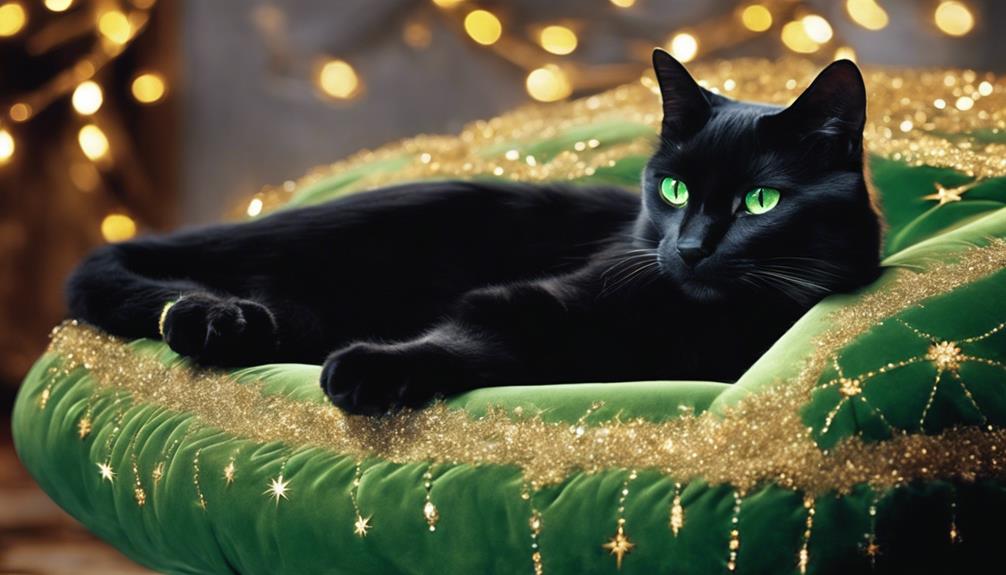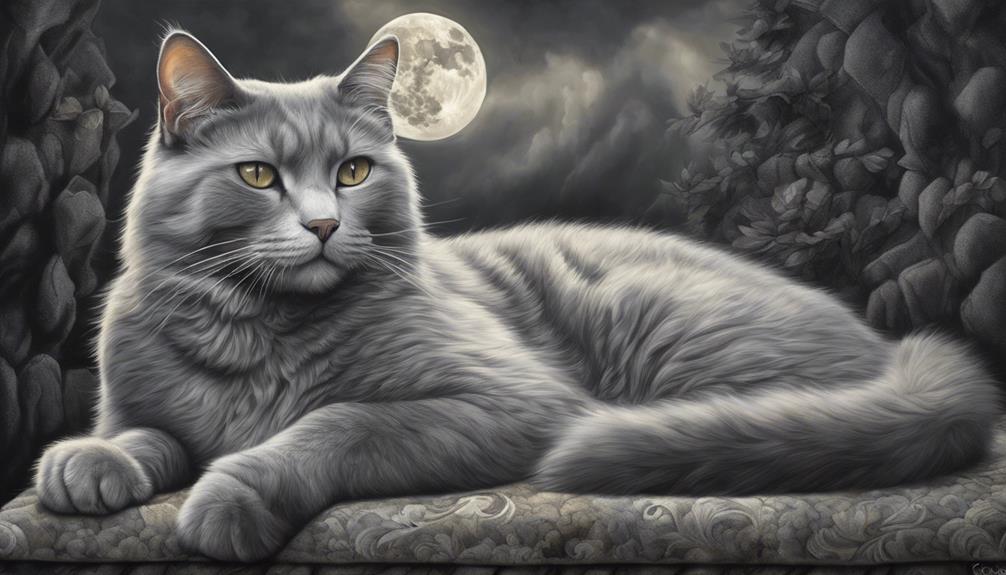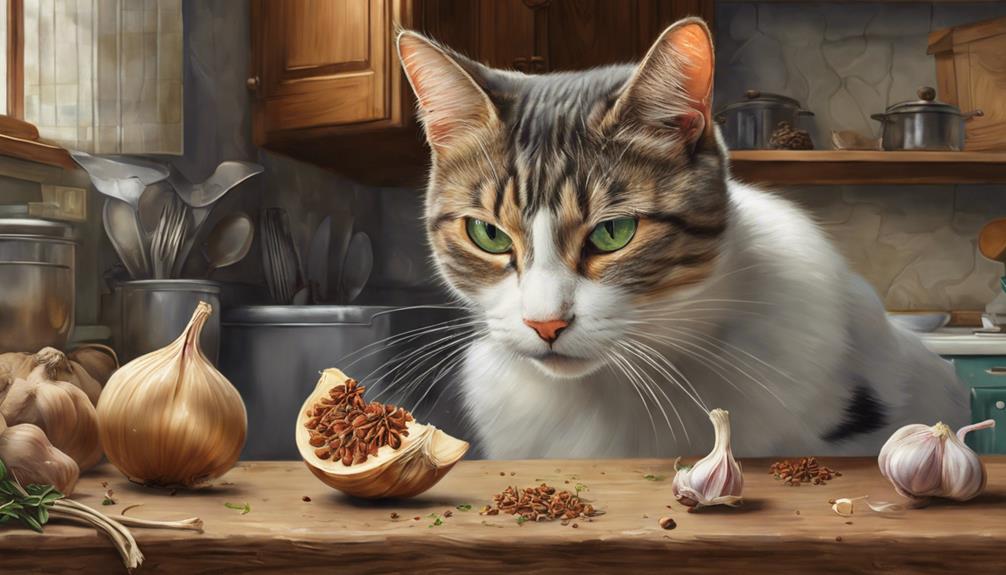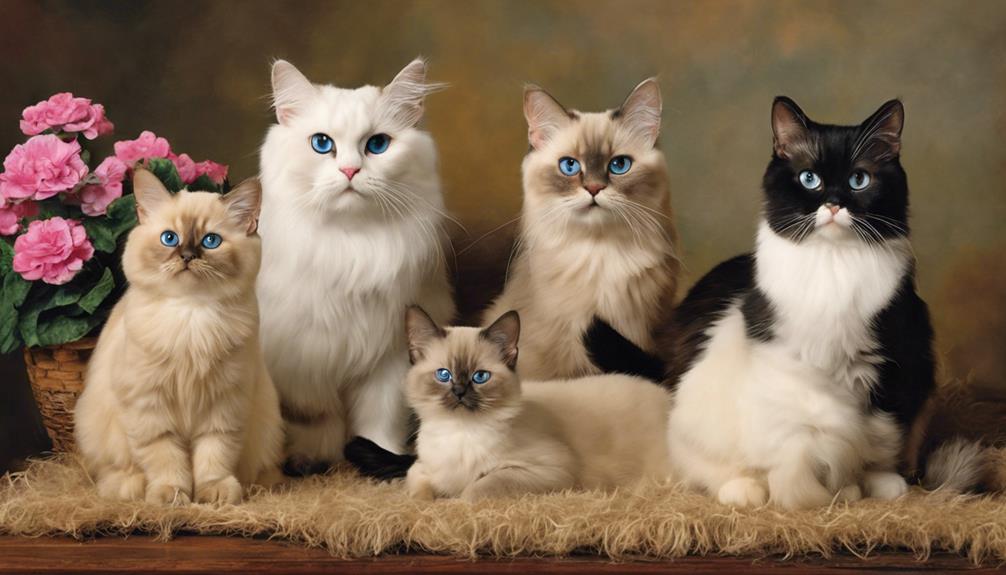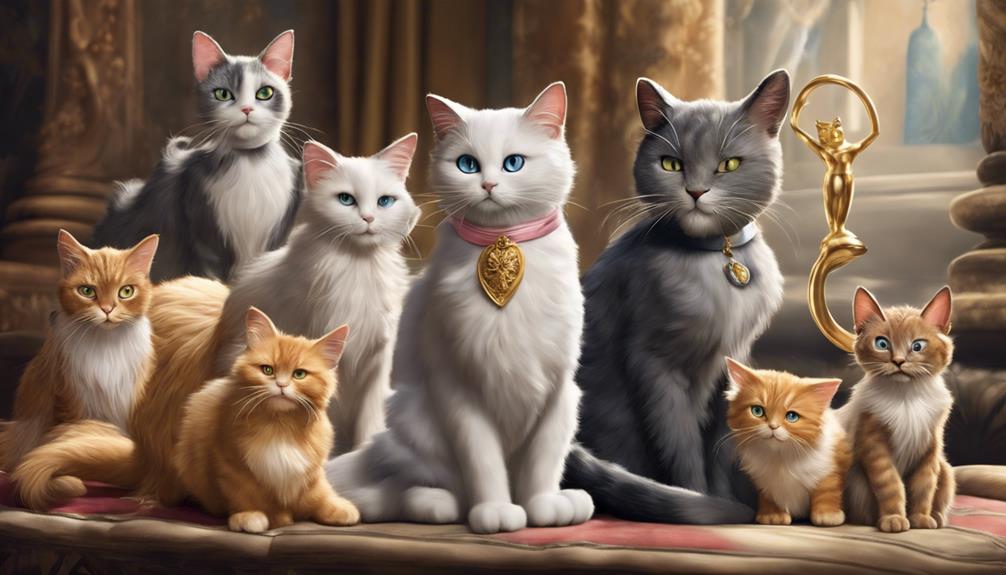When choosing a unique name for your cat, consider whimsical celebrity-inspired names like "Banjo" or "Zelda." Nature-inspired options such as "Willow" or "Nova" can add a cosmic touch. Opt for fictional character names like "Merlin" for a magical vibe. Old-fashioned names like "Pearl" or "Theodore" bring elegance. Reflect your cat's personality with gender-specific names like "Luna" or "Felix." Movie-inspired choices like "Simba" are iconic. Literary names such as "Darcy" offer sophistication. Food and drink-inspired names like "Chai" can be fun. Mythical names like "Athena" exude power. International names like "Nala" showcase cultural diversity. More variety awaits!
Key Takeaways
- Choose whimsical celebrity-inspired names for charm and creativity.
- Opt for nature-inspired names to connect cats with the natural world.
- Consider fictional character names to add a whimsical touch.
- Select old-fashioned names for sophistication and elegance.
- Explore unique gender-specific names to reflect your cat's personality.
Whimsical Celebrity-Inspired Cat Names
We absolutely adore the charm and creativity that whimsical celebrity-inspired cat names bring to our feline companions. Choosing a unique name like Kitty Purry or Cindy Clawford adds a touch of glamour and fun to your furry friend's identity.
These names pay homage to famous celebrities in a lighthearted and creative way, sparking conversations and bringing smiles to people's faces. Imagine calling out 'Paw McCartney' or 'Brad Kitt' and seeing your cat respond with a playful flick of its tail.
The cleverness and wit behind these names make them stand out among the crowd of typical pet names. Whether you're a fan of music, movies, or fashion, there's a celebrity-inspired cat name out there that will perfectly suit your feline companion.
Embrace the whimsy and originality that these names offer, and enjoy the special bond that comes from giving your cat a truly unique moniker.
Nature-Inspired Cat Names
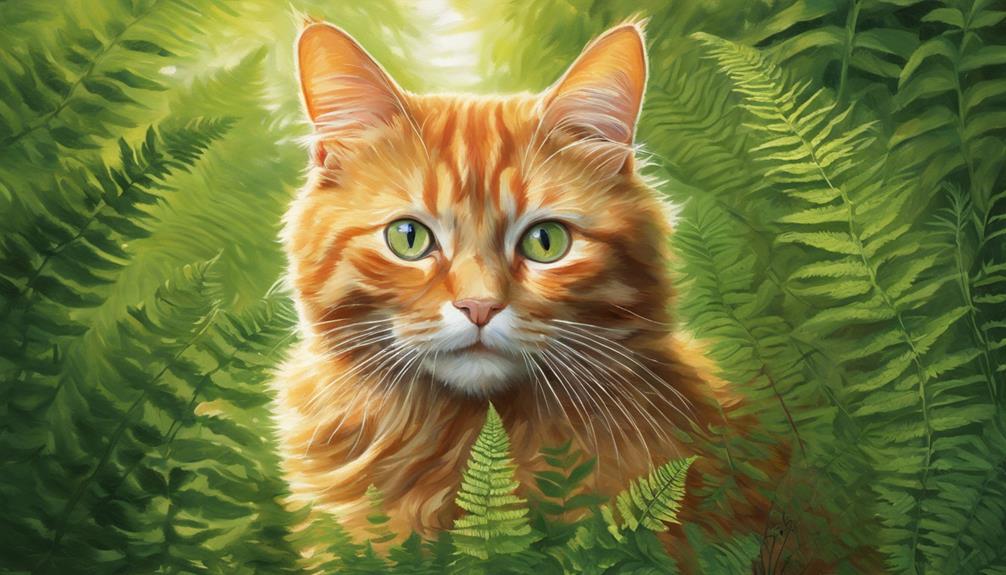
When selecting nature-inspired names for your cat, think about choices like Zinnia and Nebula to infuse a botanical and cosmic essence into their identity.
Floral-themed names such as Aster or Dahlia can also beautifully represent the marvels of nature in your feline companion's name.
Choosing an earthy or floral cat name can bring a distinct and revitalizing touch to your cat's identity, showcasing your admiration for the natural world.
Earthy Cat Names
Earthy cat names, imbued with the essence of nature, offer a serene and harmonious touch to your feline companion's identity. Nature-inspired names like Willow, Jasper, Luna, Ivy, and Sage can reflect your cat's connection to the earth, highlighting their beauty and gracefulness. These unique names evoke a sense of the outdoors, making them a fitting choice for cats who love to explore or possess a calm demeanor. Embracing earthy cat names adds a touch of tranquility to your furry friend's persona, mirroring the wonders of the natural world. Here are some examples of earthy cat names that can perfectly capture your cat's essence:
| Earthy Cat Names | |||
|---|---|---|---|
| Willow | Jasper | Luna | Ivy |
| Sage | Terra | Hazel | River |
Floral Cat Names
Delight your feline friend with a touch of nature and elegance by exploring floral cat names for their unique identity.
Floral names, inspired by beautiful flowers like Zinnia, Dahlia, and Aster, evoke a sense of nature and elegance that can suit your cat perfectly.
Naming your cat after a favorite flower is a thoughtful way to reflect their individual personality. These names offer a creative and meaningful choice for your furry companion, ranging from classic options like Lily to timeless ones like Rose.
Embracing floral cat names not only adds a touch of beauty to your cat's identity but also connects them to the natural world in a graceful and elegant manner.
Fictional Character Cat Names
Drawing inspiration from beloved characters in movies, TV shows, and literature, fictional character cat names can add a whimsical touch to your furry friend's identity. When selecting a name for your feline companion, consider unique options like Ravenclaw, Luke Skywhisker, Chewbacca, Jasmine, or Moana. These names not only reflect your interests but also showcase your cat's personality.
By choosing a fictional character name, you can give your cat an identity that stands out and initiates conversations with fellow fans. Whether your cat embodies the bravery of a superhero or the elegance of a princess, there's a vast array of fictional character names to suit every type of feline.
Embrace the creativity and charm that these names bring, making your cat's name not just a label but a story waiting to be told. Let your imagination run wild as you explore the world of fictional character cat names for your beloved pet.
Old-Fashioned Cat Names
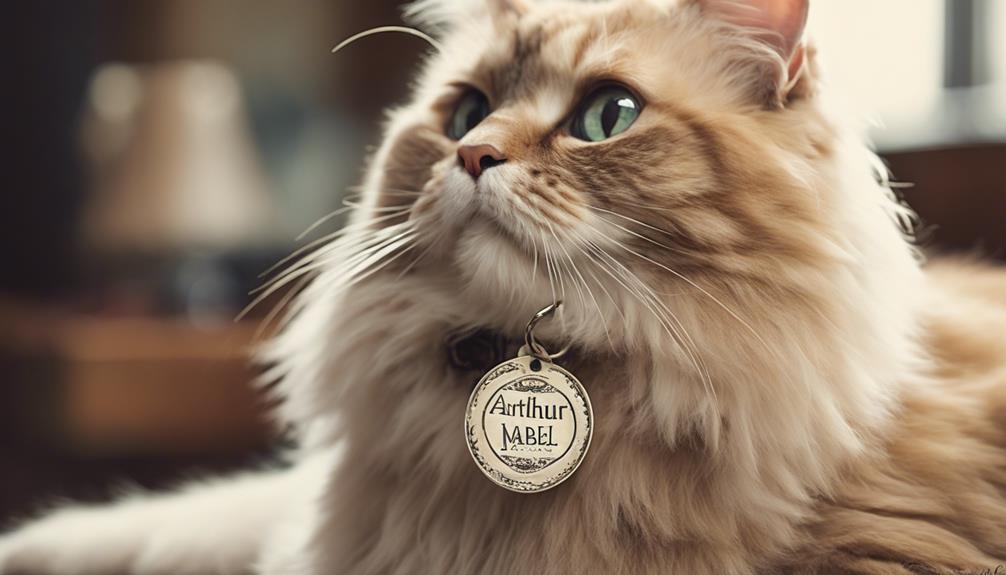
Old-fashioned cat names bring a touch of sophistication and elegance to your feline friend's identity. Classic options like Ellsworth and Valentino exude timeless charm that resonates with cat owners seeking a vintage flair.
Consider names such as Cecily and Orson for a touch of tradition and refinement in your cat's moniker.
Classic Cat Name Ideas
Why do classic cat names like Whiskers, Mittens, and Fluffy hold a timeless appeal for cat owners of all breeds and personalities?
Classic cat names, such as Shadow and Ginger, reflect common coat colors and patterns, adding to their traditional charm. These names have been cherished for generations, embodying a sense of nostalgia and familiarity that resonates with many cat owners.
The choice of classic cat names often stems from a desire to honor the enduring connection between cats and these beloved monikers. Whether it's the soft fur of Mittens or the playful nature of Whiskers, these traditional names offer a sense of comfort and warmth to both cats and their owners.
Embracing classic cat names can bring a touch of timeless elegance to your feline friend's identity.
Vintage Feline Names
Vintage Feline Names bring a sense of sophistication and elegance to your cat's identity. When looking for a name that exudes classic charm, consider these options for your furry companion:
- Ellsworth: A refined choice for a cat with a distinguished air.
- Valentino: Perfect for a cat with a unique personality and a touch of old Hollywood glamour.
- Cecily: Adding a touch of vintage charm to your feline friend's identity.
Old-fashioned cat names like these can elevate your cat's presence and showcase their timeless appeal. Whether you choose Orson for a fluffy cat or Amadeus for a musical twist, embracing vintage cat names can give your pet a name that's as unique and distinguished as they are.
Unique Gender-Specific Cat Names
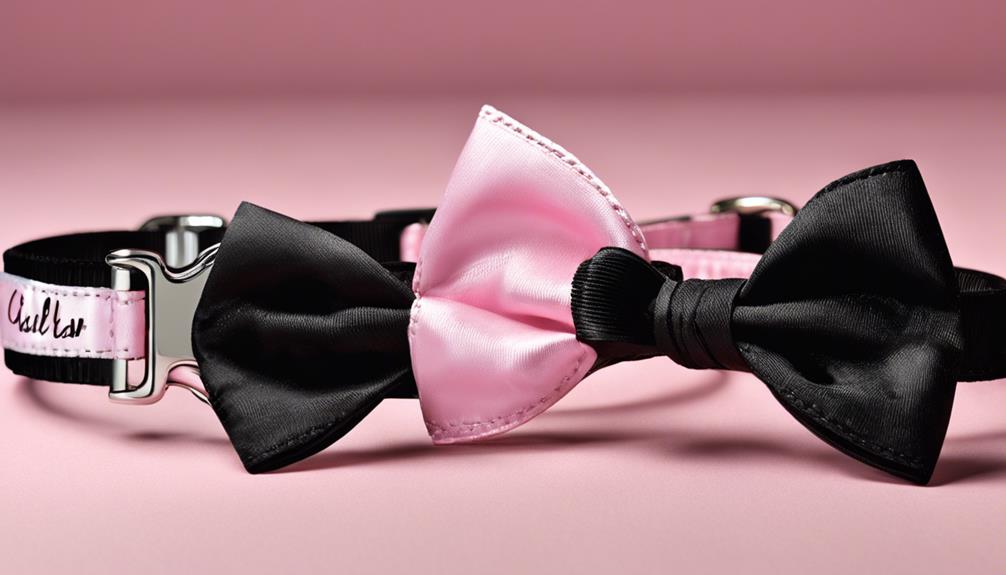
When exploring unique gender-specific cat names, it's important to choose ones that reflect your cat's personality and charm. For girl cat names, consider options like Cannon, Gerard, and Amos to add a special touch to your female feline friend.
On the other hand, for Boy Cat Names, you have a wide selection ranging from Rowan, Sebastian, to Ace, covering every letter of the alphabet. If you're a fan of Harry Potter, you can opt for magical and enchanting names like Buckley, Louis, and Marie.
For a sporty vibe, names such as Tyson, Kobe, and Ace could be perfect to mirror your cat's active and playful nature. Explore pop culture with names like Sassy, Scout, Elizabeth, and Joffrey to give your cat a trendy and unique identity.
Selecting a name that resonates with your cat's character won't only make them stand out but also deepen the bond between you both.
Movie-Inspired Cat Names

When considering movie-inspired cat names, there are several iconic options to choose from. Simba from The Lion King, Bigglesworth from Austin Powers, Luna from Harry Potter, Gandalf from The Lord of the Rings, and Hermione, also from Harry Potter, are all popular choices.
These names can add a touch of magic and charm to your feline friend while paying homage to beloved films and characters.
Iconic Movie Cat Names
Exploring iconic movie cat names provides a creative and nostalgic way to choose a unique identity for your feline companion.
- Pop Culture Touch: Names like Crookshanks from Harry Potter and Bigglesworth from Austin Powers offer a nod to famous feline characters in movies.
- Reflecting Traits: Movie-inspired cat names can reflect the traits or characteristics of beloved feline characters on screen, adding depth to your furry friend's identity.
- Cinematic Love: Choosing a movie-inspired cat name can be a fun way to showcase your love for cinema while giving your cat a distinctive moniker.
Whether your cat embodies the spirit of Simba or the sophistication of Bigglesworth, movie-inspired names offer a plethora of options to capture your cat's unique personality.
Famous Feline Films
Let's explore some famous feline films that can inspire unique and charming names for your cat companion. Movie-inspired cat names offer a playful and creative twist to your feline friend's identity.
Cats named after iconic movie characters like Simba from 'The Lion King' or Bigglesworth from 'Austin Powers' exude personality and a love for cinema. Choosing a name from famous feline films not only showcases your passion for entertainment but also adds a touch of charm to your furry friend.
Whether you're a fan of animated classics or adventurous tales, movie-inspired cat names provide a memorable and distinctive flair. So, consider giving your cat a name that reflects the magic of the silver screen and watch them embody that unique character with purrfection.
Literary Cat Names
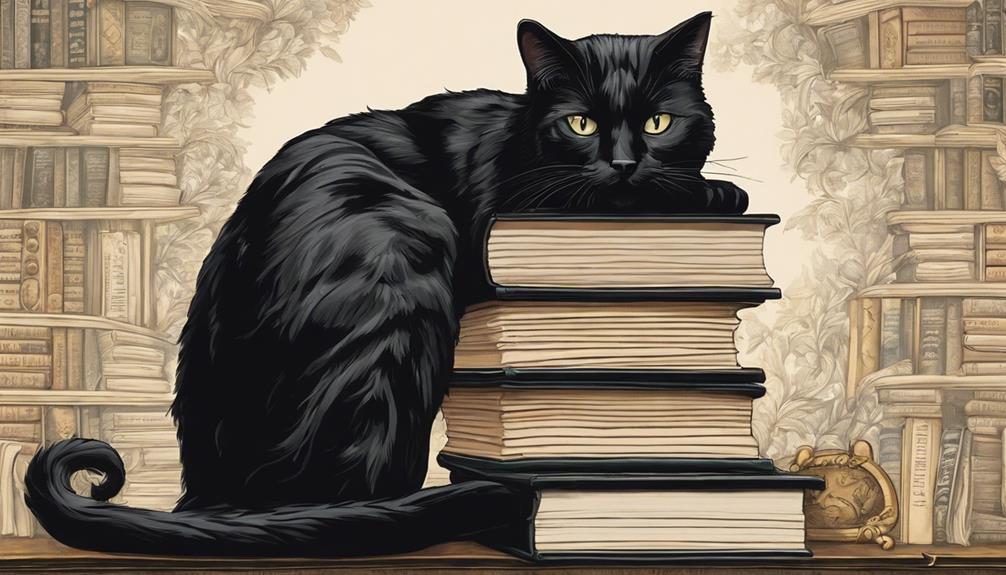
Literary cat names offer a sophisticated and unique touch to your feline companion's identity by drawing inspiration from famous characters in books and authors. When choosing a name for your cat, consider these intriguing options:
- Crookshanks: A nod to Hermione Granger's loyal feline friend in the Harry Potter series.
- Gandalf: Inspired by the wise and powerful wizard from J.R.R. Tolkien's epic, *The Lord of the Rings*.
- Fitzwilliam: Adding a touch of elegance with this name from Jane Austen's classic novel, *Pride and Prejudice*.
Food and Drink-Inspired Cat Names
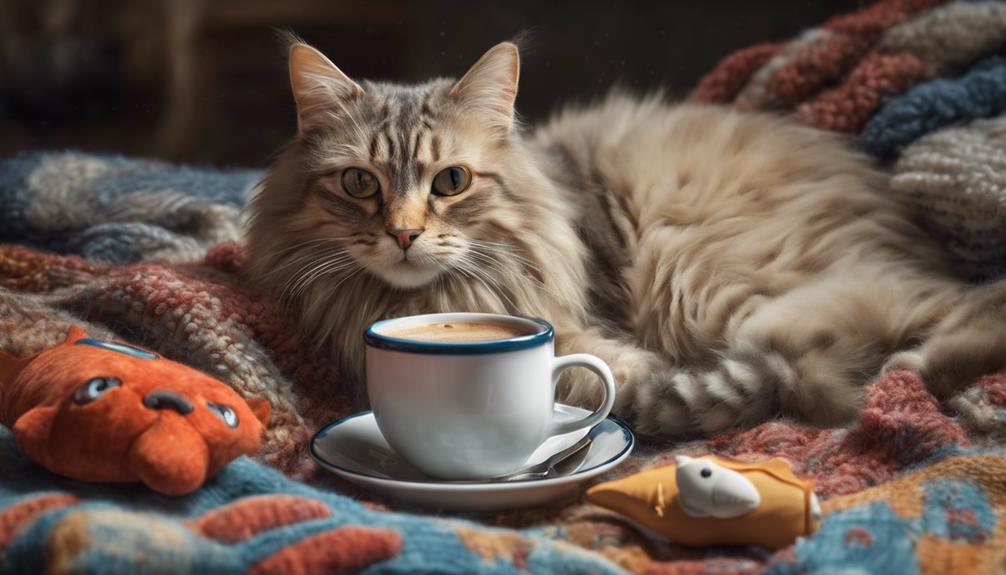
Indulge in creativity by considering food and drink-inspired names for your feline friend. Unique female cat names like Cupcake or Mocha, and unique male cat names such as Whiskey or Biscuit, can add a playful and charming touch to your cat's identity.
These cute cat names not only reflect your pet's personality but can also pay homage to their favorite treats. Naming your cat after a beloved snack or beverage can result in a distinctive and memorable choice that sets your furry friend apart.
Food and drink-inspired cat names serve as great conversation starters and showcase your imaginative side. So, whether your cat is as sweet as a cupcake or as strong as whiskey, consider these delightful options to give your pet a name that stands out and brings a smile to everyone's face.
Mythical Cat Names
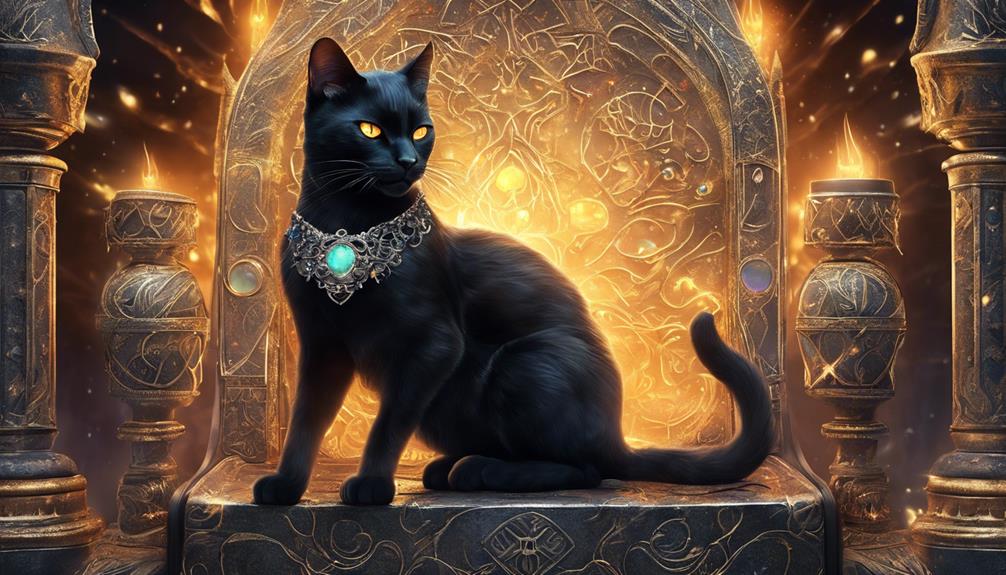
Considering our previous exploration of food and drink-inspired cat names, now we shift our focus to the enchanting world of Mythical Cat Names.
- Drawing from Mythology: Mythical cat names can be inspired by gods and goddesses from different mythologies, such as Zeus, Athena, and Freya, adding a touch of mystique and power to your cat's persona.
- Legendary Figures: Names like Thor and Apollo, derived from powerful and legendary figures in mythology, imbue your feline companion with a sense of majesty and grandeur.
- Meaningful Reflection: Mythical cat names can mirror the characteristics associated with mythical beings, embodying traits like wisdom, strength, beauty, or agility, giving your cat a name that holds deeper significance.
Embracing a mythical cat name allows you to infuse your furry friend's identity with a unique and meaningful essence drawn from the vast tapestry of mythology. By delving into the worlds of ancient stories and legends, you can find a name that not only stands out but also encapsulates the mysticism and wonder of these timeless tales.
International Cat Names

Investigating the domain of International Cat Names reveals a diverse tapestry of cultural diversity and uniqueness in naming our feline companions. When selecting an international cat name, one explores a world of different languages and meanings, adding flair and depth to their pet's identity. Names like Sakura (Japanese for cherry blossom) or Gigi (French for 'earth worker') not only sound beautiful but also hold special significance. To assist you in selecting the perfect name for your furry friend, we've compiled a table showcasing a variety of international cat names from different languages:
| Name | Meaning |
|---|---|
| Sakura | Japanese for cherry blossom |
| Sven | Scandinavian for 'young warrior' |
| Luna | Spanish for 'moon' |
Choosing an international cat name can be a conversation starter and a way to showcase your appreciation for diverse cultures. Consider names like Esmeralda (Spanish for 'emerald') or Kai (Hawaiian for 'sea') to give your cat a unique and meaningful identity.
Frequently Asked Questions
What Is a Name for a Fluffy Cat?
When choosing a name for a fluffy cat, we look for one that captures their essence. It should reflect their appearance, personality, or unique traits. Popular choices like Whiskers, Mittens, Fluffy, Shadow, and Ginger offer a starting point.
What Are Rare Unique Cat Names?
Rare unique cat names can be like hidden gems, waiting to be discovered. They add charm and mystique to your feline companion. Embrace the allure of names like Seraphina, Ragnarok, or Nebula for a truly distinctive choice.
What Is the Coolest Cat Name?
The coolest cat name is the one that captures your heart and reflects your cat's unique personality. It's a name that makes you smile every time you say it and brings joy to your furry companion.
What Is a Silly Name for a Cat?
Oh, we've got a gem for you! How about calling your feline friend "Professor Purrfect Whiskerstein III"? It's the epitome of silly cat names, guaranteed to make everyone chuckle and adore your furball.
Can I Name My Cat After a Plant That Has “Cat” in Its Name?
Many cat owners wonder if they can name their furry friends after plants that contain the word “cat” in their names. Luckily, there are 7 plants with cat-like titles that could inspire unique cat names. From the popular Catnip to the elegant Cat’s Whiskers, these plant names could add a playful touch to your feline’s identity. Choosing a name that resonates with both you and your cat can make their moniker even more special.
Conclusion
To sum up, selecting a unique name for your cat can be an enjoyable and imaginative process. Whether you choose a whimsical celebrity-inspired name or a nature-inspired one, the possibilities are endless.
Remember, a cat's name is more than just a label – it's a reflection of their personality and charm. So take your time, get inspired, and find the perfect name that truly captures the essence of your furry friend.
After all, as they say, a cat by any other name would still be as purrfect.
